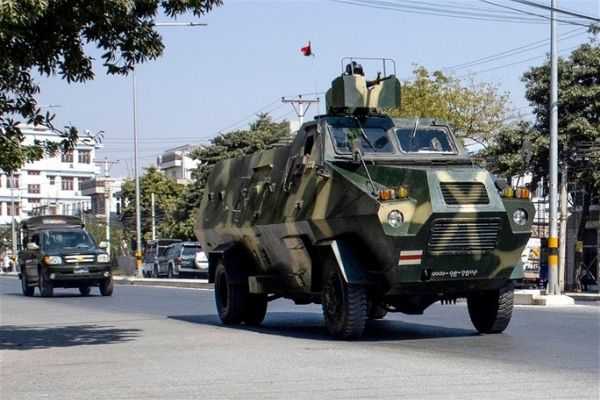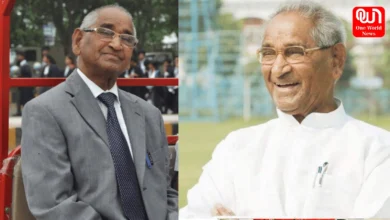
A brief history of the role of Military in Myanmar politics
The Myanmar military grabbed power in a coup on February 1, ahead of the scheduled meeting of the country’s newly elected President. National League for Democracy leader, Aung San Suu Kyi, who led her party to a landslide victory in the 2020 election was detained. President Win Myint has also been detained.
The Myanmar military ordered shutting off of the internet and cutting off flights. The military coup has returned in Myanmar to full military rule after a short span of quasi-democracy that began in 2011. The military rule which was running the country from 1962 to 2011, had implemented parliamentary elections and other reforms in 2011.
What led to the military coup in Myanmar?
Parliament was scheduled for its first session in the country, first session since the election on 8th November, in which National League of Democracy won 83 per cent of the body’s available votes. But the military refused to accept the election results saying that it was fraudulent.
This election was widely seen as a referendum on the popularity of Aung San Suu Kyi, the head of NLD, who has been the de facto civilian leader of the country since taking office in 2015.
The new parliament was likely to approve the next government by endorsing the election results.
The possibility of the coup emerged after the country’s military tried to argue in the Supreme Court that results were rigged and fraudulent. The Myanmar military had also threatened to take action and surrounded the houses of parliament with soldiers.
Read more: What are the key takeaways from Budget 2021- A small analysis

How was the coup carried out?
On the first day of February, the military detained the leaders of the governing NLD party and Myanmar’s civilian leadership, including the Noble Peace Prize winner Aung San Suu Kyi, Cabinet Ministers, opposition leaders, chief minister of several regions, writers and activists.
The coup was officially announced on the military-owned Myawaddy TV station when a news anchor announced that the military is declaring a national emergency for 1 year under the 2008 constitution. Quickly, the military seized control of the country’s infrastructure, cancelled almost all domestic and international flights and suspended almost every television broadcasts. Internet and telephone access were also suspended in major cities. Commercial banks and the stock market was closed. Long queues were seen outside the ATMs at several locations. People in Yangon, the largest city in the country, started stockpiling food and other supplies.
The military’s allegation
A military spokesman had earlier said that 8.6 million irregularities in 314 areas were found across all states and regions, indicating that there was a possibility of people voting more than once or engaging in other voting malpractices.
The Union Election Commission of the country said there was no evidence of any voter fraud or malpractice. Further, it had added that each vote was “counted transparently and witnessed by-election candidates, the media, election staff, observers and other civil society organizations”.
History of the military coup in Myanmar?
The entry of the Myanmar military into state politics came in 1948 when Chief of Staff General Ne Win was made the interim prime minister following a split in the Anti-Fascist People’s Freedom League (AFPFL). Ne Win was given total control of the Army, which he restructured along Socialist lines.
In 1960’s election U Nu, a leader of AFPFL and former head of the government, emerged victorious in the election. Ne Win handed him back the government but snatched it back two years later in 1962.
In 1990, the NLD wins the majority of the legislative seats in Myanmar’s free election almost after three decades, but the military rejects the results and refuses to hand over the power to the people.
Later in 2010, after a two-decade-long struggle for democracy, Myanmar gets its first democratically elected Govt in 50 years and Sunn Kyi is made the head of the government.
Will it affect India-Myanmar relations?
For India, the return to military rule by Myanmar’s Tatmadaw (Army) is a repeat of the event thirty years ago. But the Modi administration has avoided strong public criticism of the Myanmar military’s action, which we did in 1989-90.
Yes, India does care about democracy, but that is a luxury India knows, it won’t be able to afford for at least a year and maybe for a decade. The only option for India will be to engage with Myanmar’s new authority by building outreach via the security and defence establishment.
A change in India’s stance against the military coup is being seen for several reasons. One of them is the assistance of the Myanmar military in securing the North East Frontiers from insurgent groups.
Another reason is the former State Counselor of Myanmar, Suu Kyi herself, whose image as a democracy icon has been damaged by her works in the last 5 years. She failed to push back the military and even defended the army’s slaughter of Rohingyas in Rakhine State in 2015.
Experts believe that a harsh reaction from India like the United States, which threatened action against those responsible for the coup, would only benefit China. The military ruler is already considered close to China.
Apart from strategic concerns, India has cultivated several development and infrastructure projects with Myanmar, which the country sees as the “gateway to the East and ASEAN countries.” These include the Kaladan Multi-modal transit transport network, the India-Myanmar-Thailand Trilateral Highway and the plan to establish a Special Economic Zone at the Sittwe deep-water port. Also, we are still hoping to solve the Rohingya refugees issue.
Have a news story, an interesting write-up or simply a suggestion? Write to us at info@oneworldnews.com








